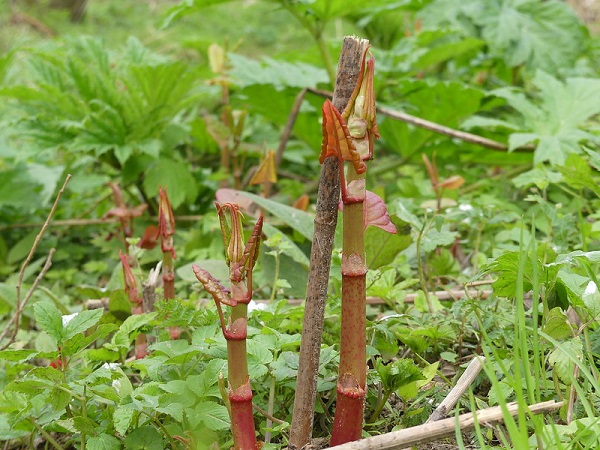Japanese knotweed can cause a lot of problems on your property so it's important you can identify it all year round! Now that we're moving into spring, you'll probably notice a lot of different plants emerging in your garden, so it's important to keep your eye out for Japanese knotweed. Left untreated, Japanese knotweed can damage your property and can even prevent you from selling your home.

Image source: Scottish Invasive Species Initiative (Flickr)
Knowing what Japanese knotweed looks like in the spring can help you save money on treatment, repairs, and lawsuits! That's right, people have been known to sue their neighbors if Japanese knotweed has been allowed to invade their property, so spotting and treating it early is a must!
Read More: What to do if your neighbour has knotweed
Japanese knotweed appears in spring
Most people see Japanese knotweed appear in the garden for the first time during spring. Like all plants, Japanese knotweed grows new shoots that grow up through the soil when the weather starts to get warmer.

Initially, Japanese knotweed spears will appear. They're red/purple in colour and look very similar to asparagus, with a woody stem and a pointed tip. During spring, the leaves of the Japanese knotweed plant are curled up (they're still very young at this point).
By the end of spring, these small canes can be up to 3 metres high! Japanese knotweed grows quickly, which is another reason why you should keep your eye out for it during spring.
Japanese knotweed in summer
If by chance, you don't notice the Japanese knotweed in your garden in summer, you might have a chance to spot it in summer before it spreads too far!
During summer, Japanese knotweed has a lot more foliage, it appears green and leafy with only a few speckles of red/purple left on the stem.
When Japanese knotweed eventually flowers, it has small creamy white flowers, which ironically, are quite pretty. Unfortunately, these little white flowers are a sign of an underlying problem that needs to be dealt with quickly.
Head to our Japanese knotweed Identification page for more information!
Japanese Knotweed Identification >
Remember to check the plants in your garden regularly during spring and summer. If you spot anything that looks like Japanese knotweed, you should get it checked by Japanese knotweed specialists immediately. Contact us for a Japanese knotweed survey now!
Get In Touch >
